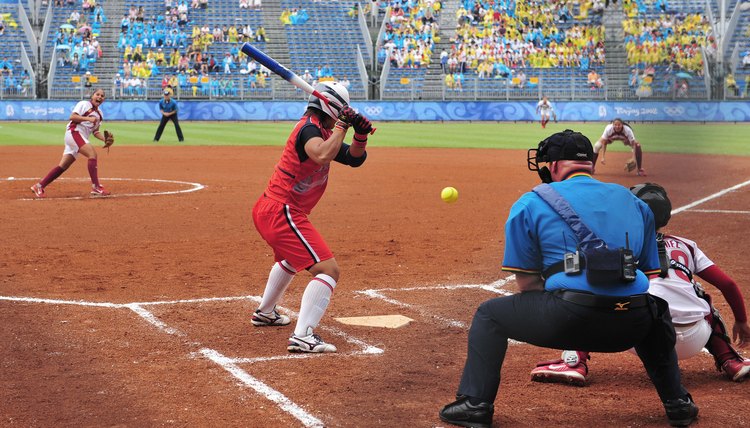How to Calculate Softball ERA

Some of the most important softball and baseball statistics and metrics are given in averages and percentages: batting average, on-base percentage, slugging percentage, fielding percentage… but what metrics are used to measure a pitcher’s performance?
A pitcher’s ERA, or earned run average, is a pitching statistic used to calculate how many runs a pitcher gives up, on average, in the course of a complete game pitched.
What is a good ERA?
Most commonly referenced in Major League Baseball and professional fastpitch softball but used all the way down through the high school and college levels, the good ERA is a lower ERA. A high softball and MLB baseball ERA means that a pitcher gives up lots of hits and runs to opposing hitters and teams.

Difference between softball and baseball ERA
A softball pitcher’s ERA is calculated with almost exactly the same formula used to calculate a baseball pitcher’s ERA; the only difference is that the softball formula takes into account a shorter standard game (seven innings) than the typical nine-inning baseball game.
How to calculate ERA
While there may be ERA calculators or earned run average calculators online, some may want to calculate ERA for themselves. Here is how to do that:
- Research the number of earned runs a given softball pitcher has given up during any particular time period. Make sure to count earned runs only—runs scored as the result of another player’s error don’t count toward a pitcher’s ERA. Unearned runs do not count towards a pitcher’s ERA.
- Add up the number of innings pitched during the same period of time. Make sure to include partial innings in fraction form (for example, the total number of innings pitched in the early part of the season might be 15 1/3).
- Divide the number of runs earned by the number of innings pitched. This gives you the pitcher’s earned run average per inning pitched. If you want the ERA per game played, you’re not done yet.
- Multiply the result from Step 3 by 7, the typical number of innings in a softball game. (If you were calculating the ERA of a baseball player, that number would be 9, since the total number of game innings in baseball is typically nine).
The resulting number is your softball pitcher’s ERA per game.

Tips
Because runs scored with the help of fielder errors don't count on your ERA, the statistic offers a fair measurement of a pitcher's value as compared to something like strikeouts or home runs given up. It also helps you compare pitchers on two different teams when one squad is poor defensively.
Tips
- Because runs scored with the help of errors don't count on your ERA, the statistic offers a fair measurement of a pitcher's value. It also helps you compare pitchers on two different teams when one squad is poor defensively.
